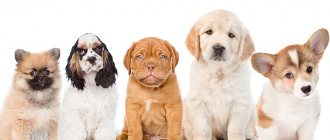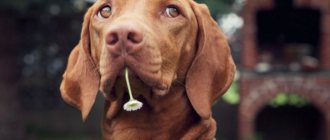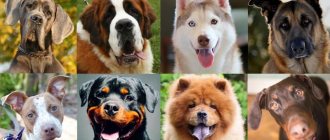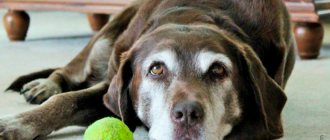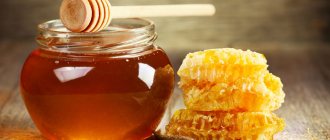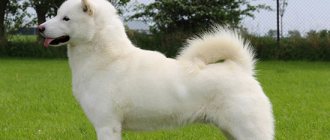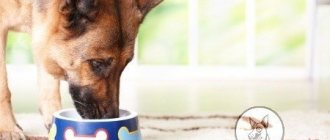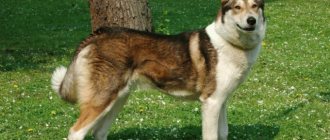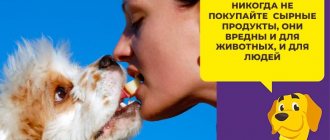Bowls for food and water should be durable, comfortable, made of high-quality material, selected taking into account the size and breed of the dog. There are other nuances that are useful to know for owners of four-legged pets who want to ensure the animal’s comfort while eating.
Pet stores and online sites sell dog bowls. Which ones are better? How many dishes should a four-legged pet have at home? Which material do you prefer: stainless steel or plastic? How much food should I give my dog? The answers are in the article.
How many dishes does a pet need?
In addition to a bowl for dry or wet food, there should be a container for water at home. Veterinarians and breeders insist: drinking liquid should be freely available at any time of the day. Violating the rule can lead to problems with digestion and general condition, especially in the heat. The water container can be deeper to prevent your pet from spilling liquid around the bowl.
So how much dishes should you buy for your four-legged pet? It is enough to have one container for water and two for food (dry and wet). A couple of spare bowls won't hurt if the dishes suddenly crack or break. If you have containers for food and water made of stainless steel at home, the problem of container damage disappears for a long time, and one double structure with two bowls on a stand will suffice.
At what height should I place the bowls?
It is customary to place the bowl no higher than elbow level. Lifting it under the chin is unnecessary and even dangerous. When a dog eats from the ground, its esophagus runs almost in a straight line. At the same time, the stomach moves slightly forward. In a standing position with the head raised, the esophagus bends in an s-shape, which makes it difficult for food to move. Just as it will not be very convenient for a person to swallow with his head thrown back.
A comfortable level can be determined experimentally. Place several bowls at different heights with the same food. The pet should not be very hungry. He will try to eat with each, but will definitely linger over one.
In the picture on the right, the dog's esophagus forms an S-shaped bend.
How to choose: recommendations for owners
Inexperienced owners, after purchasing pets or choosing an animal from a shelter, try to provide maximum comfort to their new friend and purchase items to care for and feed the dog.
Learn about the early signs and symptoms of colitis in dogs, as well as treatment for the inflammatory disease.
Instructions for using the drug Liarsin in veterinary medicine for small breed dogs are described on this page.
Optimal selection of bowls:
- along the length of the dog's ears. For spaniels and other dogs with floppy ears, containers that are deep enough and taper toward the top are suitable for the pet to eat in peace. Wide bowls for dogs in this category are not suitable: the ears will easily fall into water or wet food. Wool particles are a poor addition to canned meat and water. Dirty or wet ears also do not bring joy to the pet and the owner, who is forced to clean the furniture and wipe away marks;
- according to the structure of the pet's muzzle. For dogs with a flat muzzle (Yorkie, Pug, Pekingese), you need a fairly wide and not very deep bowl, otherwise it will be inconvenient for the animal to get food from the bottom of the deep container. Pets with long noses (shepherds, Great Danes, Italian greyhounds, Dalmatians) need a bowl that is narrower, but deep enough for the dogs to eat comfortably and not have to scoop up pellets or natural food over a wide surface. Be sure to take into account not only the length and shape of the nose, but also the size of the pet: a tiny Italian Greyhound or Chinese dog will not be suitable for a large bowl for large animals: a Great Dane or a Shepherd.
How to properly feed a Labrador?
In order for your pet to always be healthy and cheerful, you need to follow the basic rules of feeding it, as well as strictly structure its diet to avoid overeating.
Basic feeding rules
There are quite strict nutritional rules created specifically for Labradors. These include:
- puppies should eat at least 6 times a day, with age the amount of food intake must be reduced, an adult dog eats 2 times a day - morning and evening;
- You can give treats between food breaks;
- pour fresh boiled water every morning; raw tap water can be dangerous to your dog’s health;
- make sure that the Labrador does not drink from the toilet, since very often these dogs perform this manipulation;
- You should create a clear, balanced diet.
Dry food
When choosing dry food for your Labrador, you should consider the following qualities:
- the animal must like the taste;
- the price cannot be too low or too high;
- the type of feed is on constant sale;
- The retriever has no manifestations of an allergic reaction to the components included in the composition.
Natural products
If you prefer natural products, you should pay attention to the following:
- dairy products should become the basis of the entire diet, since they are the very first to be introduced (yogurt, kefir, natural yogurt, low-fat cottage cheese);
- lean, boneless meats such as boiled beef, chicken and turkey;
- vegetables and fruits are considered a “vitamin” addition to the dog’s main diet; it is recommended to give apples, carrots, pears, pumpkins, zucchini, beets;
- it is allowed to boil rice, buckwheat and oatmeal;
- It is permissible to introduce boiled chicken or quail eggs into the diet;
- Only sea fish of low-fat varieties are allowed.
Prohibited Products
It is strictly not recommended to give Labradors the following foods:
- smoked meats, pickles, spicy and hot dishes;
- pasta, pastries, cakes and other flour products;
- tubular bones;
- potatoes in any form;
- pork and lamb;
- sausages, sausages and sausages.
Material of manufacture
An important aspect to pay attention to. Inexpensive containers need to be changed frequently: scratches appear on the walls over time, bacteria penetrate microcracks, and the risk of intestinal infections increases.
Bowl material - varieties:
- plastic. The cheapest option for dishes for food and water. Suitable for temporary use, for two to three weeks, until the owner buys a metal container. Plastic containers must be thoroughly washed and wiped dry, otherwise harmful microbes will settle in microcracks;
- ceramics. A good option for a small four-legged pet and a calm dog, but not for puppies. The ceramics do not scratch, last a long time, look stylish, it is easy to clean the surface from food residues, but the bowl is easy to break if the pet is large or too active. It is important that the container is on a stand: this way there is a higher chance that the bowl will remain intact for a long time;
- stainless steel. The best option in terms of comfort for the pet and owner. The material is not subject to corrosion, it is easy to clean the container from food, wipe it dry, and scratches do not appear like on plastic. Stainless steel is suitable for bowls in which the owner puts various types of food: from granules to raw meat, dairy products, cereals and vegetables. It is convenient when containers can be fixed in a stand. To ensure durability and preserve the quality of the products, do not wash stainless steel with steel wool or caustic compounds.
Bowl - sippy cup
What it is? The device provides maximum comfort for the pet and makes it easier for the owner to care for the floor covering: many dogs, when eating from ordinary dishes, often spill water, scatter dry food and natural food. The sippy cup is suitable for messy and large dogs. Water is supplied to the upper part from a special compartment in small portions, and it is almost impossible to spill the liquid. The water container can be tilted, which makes it easier for your pet to get liquid.
Double bowls
An excellent option for placing water and food containers in one area. It is important that the one-piece double bowl has an anti-slip coating on the stand, otherwise traces of spills and granules will lie on the floor, far from the eating area.
Note! The dog should not easily move containers on a stand or products mounted on metal legs - this rule must be taken into account when choosing dishes for your four-legged pet. It is convenient if the bowls are easy to remove and place in a solid stand: in this case, the pet can eat comfortably, and the floor around remains clean.
Necessary for care
In order to provide your Labrador with proper care and attention, you need to purchase all the most important accessories. These include:
- bowls;
- bed;
- collar, leash, harness;
- comb and nail clipper;
- treats;
- toys;
- hygiene products;
- first aid kit.
Bowls
For a Labrador, you need to purchase 2 separate bowls with a volume of 4.7 liters, which are installed on a special stand. It is usually adjusted as the puppy gets older. The bowl should be made of stainless steel, which the dog cannot injure himself on, even if he knocks it over. After all, a ceramic container can break and fly into many sharp fragments that are not safe for the animal.
Bowl
Bed
Retrievers love to sleep, so a soft and cozy bed will be a must-buy for your pet. Choose a bed according to the size of your dog. Remember that the animal should be comfortable and comfortable in the bed. When choosing dimensions, consider the length so that the Labrador can stretch its hind legs. It is better to choose a combined material: the interior of the lounger is made of cotton, and the outer and synthetic fabrics, which are easy to clean and do not get dirty so much.
bed
Collar, leash, harness
It is best to purchase a leather collar, as it is considered softer and does not rub the dog’s neck as much. As the puppy gets older, it is recommended to change the collar to a larger diameter.
You can buy two types of leash: leather and double-braided chain. A chain is best suited for a puppy to teach him to walk next to him, as it is more reliable. For an adult dog that obeys its owner, you can use a thick leather leash. A harness is necessary exclusively for the smallest dogs aged 2-3 months, and it is used only for the first walks, so as not to frighten the puppy and allow him to get used to the street, and only then put on a collar with a chain.
collar and leash
Comb and nail clipper
Labrador wool cannot be called the most capricious, but it still requires daily care. To do this, just buy a comb with soft bristles and massage your pet during morning and evening combing.
A nail clipper is a device that is used to trim a dog's nails. As the claws grow, they need to be shortened, and this happens approximately every 3 weeks.
Treats
Bones made from pressed tendons, as well as various vitamin sticks, are perfect treats. These treats can be used as a reward during training or as a treat after the main meal.
Toys
Labradors simply love active and active games, so buying toys in this case is extremely necessary. Various rubber balls, flying saucers, ropes, just toys made in the shape of animals, and much more are suitable.
Hygiene products
Frequently washing your Labrador is not recommended. Water treatments of the dog’s entire body should be carried out approximately once a week, but after each walk it is only allowed to wash the paws. The following hygiene products can be used for bathing:
- "Biogrum Protein" - shampoo for short and thick coats;
- "Hartz" - shampoo with oatmeal;
- "Tropiclean" - shampoo for puppies.
First aid kit
For your Labrador, it is recommended to have a first aid kit, which will include the following medications:
- bandage, cotton wool;
- tourniquet;
- bactericidal patch;
- Activated carbon;
- ointment "Levomekol";
- hydrogen peroxide;
- chamomile in filter bags;
- boric alcohol.
The above means are necessary only for providing first aid, because in any case you will need the help of a veterinarian.
Criterias of choice
Breeders advise considering several aspects:
- breed of dog (level of activity);
- animal size;
- shape and length of the bow;
- manufacturing material for long-term use of the container;
- the size and length of the dog's ears;
- the presence of additional devices for the bowl: a tripod, a stand for comfortable feeding of the pet.
Size and depth
An important aspect to pay attention to. For animals with a flat face, a wide, not very deep bowl is needed. Pets with a long nose need a food dish that is deep and narrow enough to prevent the dog from splashing water or pushing food over the edges of the container. At the pet store you can “try on” the container and see which bowl suits a particular dog.
Availability of tripods and stands
A useful option that professional breeders, veterinarians and experienced amateur dog breeders pay attention to. If the bowl is on the floor, then the animal, especially medium and large breeds, has to bend low while eating, which creates additional stress on the joints and spine.
Another problem: constant swallowing of portions of air while eating, if the animal has to take food from a bowl without a stand. Indigestion, bloating in dogs, belching are problems that arise when a large amount of air enters the body at the same time as food.
Also, the stand and tripod reduce the amount of spilled water that flows into the container if the bowl is at a height. When dishes are left on the floor, the covering often ends up wet, and you have to clean up the mess after every time the dog gets thirsty.
Look at the description of the Silky Terrier dog breed, and also learn about the nuances of keeping a miniature pet in your home.
The normal pulse rate in a dog, the reasons for the deviation and methods for correcting the heart rate are written on this page.
Go to the address and read the instructions for use of the veterinary drug Travmatin for small breed dogs.
Feed supply
A modern version of a dog bowl provides gradual filling of food containers with granules and liquid. Feeder-drinker and bowl-dispenser are devices for comfortable feeding of pets in the absence of the owner. The cost of the devices is relatively low: from 250 to 580 rubles.
The operating principle is simple:
- Granulated food is placed in a flask-like container in the upper (vertical) part of the structure or water is poured. At the bottom there is a bowl made of durable plastic;
- The feed and water hopper is tightly closed with a lid, which prevents oxidation of the granules and the ingress of dust. An automatic drinker and an automatic feeder are ideal options for busy owners: you can leave food and water for the whole day;
- as soon as the liquid level in the main tank (horizontal) becomes lower (the dog eats part of the food or drinks water), a new portion of food or liquid is added from the upper tank;
- the four-legged pet will never remain hungry or thirsty as long as there is a supply of granules or water in the upper container;
- A drinking bowl and feeder with the principle of adding a new portion of food and liquid is suitable not only for dogs, but also for cats, hamsters, domestic rats, and ferrets.
It is important to choose the right bowl
At first glance, the question of purchasing a feeding container is simple. But this is far from true. It is necessary to familiarize yourself with the requirements that such accessories must fully meet.
Determining the optimal size
The size of the dog bowl and its depth are important. It makes no sense to feed your pet from a saucer even if the dog is not large. In addition to the fact that the container should correspond to the height and size of the mouth, consider the shape of the muzzle. The pet is capable of showing its sloppiness. This also needs to be taken into account.
For sloppy dogs, you should choose an accessory with high sides. In such a situation, the owner will not be faced with the need to clean up scattered pieces of food around the item. However, small breeds of dogs do not like to get food from great depths. This also needs to be taken into account.
If your pet's diet is based mainly on dry food, you should not use saucers as a bowl. When the food crumbles, it begins to irritate the pet and the owner. Shallow cups are suitable if your diet includes porridge and canned food. When choosing bowls for dogs, you will need to purchase several options, checking which one your animal likes best.
Types of bowls
It is also necessary to take into account the material from which the cup for your pet is made:
- Plastic bowls can attract attention with their relatively low cost, lightness and mobility. They are fragile, quickly break and become unusable. There are also models that have a chemical smell.
- Ceramic dog bowls are highly durable and reliable. You can heat your pet's food directly in them. Most models are resistant to damage. In addition, such accessories are much easier to wash. They're not cheap.
- Metal bowls. The most durable items. However, the process of eating food will be accompanied by a roar. Especially if the pet is large in size and has a playful character.
The most common accessories are those shaped like a trapezoid. A similar accessory expands at the bottom. From such an object, food will not spill out, and water will not splash out.

